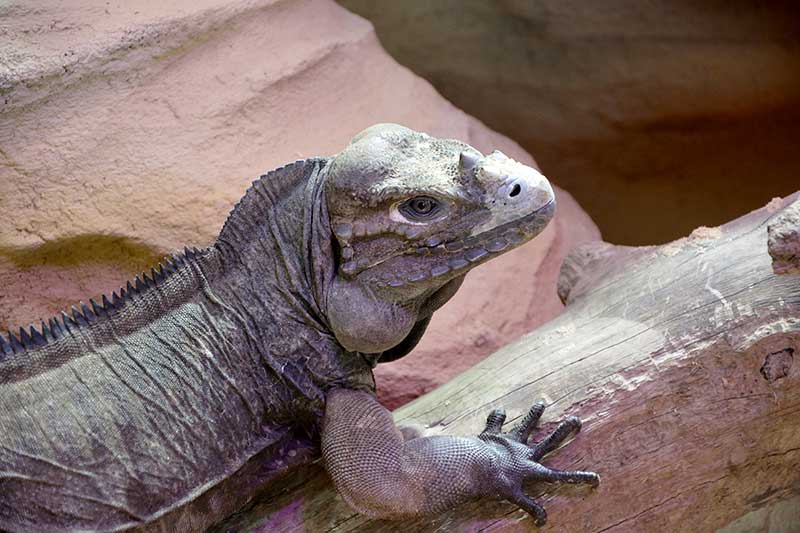-
Common name: RHINOCEROS IGUANA
Scientific name: Cyclura cornuta
Class:
ReptiliaOrder:
SquamataFamily:
IguanidaeReproduction:
incubation of 70-128 days, 5 – 20 eggsProvenance:
Haiti – Repubblica DominicanaHabitat:
dry forests, rocky and coastal area of Haiti and Dominican RepublicDiet:
rarely insects and small animals -
Rhinoceros iguana is a diurnal species present in dry forests, in rocky areas with little vegetation and in the desert areas of the island of Haiti and Dominican Republic.
It is a heterothermic animal mainly active during the day and has an extremely robust body with a massive head and powerful legs.
Most adults weigh 4-9 kg and measure 60-135 cm in length. The livery has a uniform color, ranging from greyish brown to olive-colored; on the throat there is a large cutaneous fold. On the front of the head there are some large scales that in the males are real tubercles protruding on the muzzle that look like horns.
The diet consists largely of vegetables such as leaves, flowers, berries, fruits and it is integrated with insects and other small animals.
The reproductive season begins with the rainy period in May. In this way the risk of eggs drying out is limited; 40 days after mating, in dens dug at 1 m depth, the females lay 5-20 eggs. The incubation lasts 70-128 days depending on the environmental conditions. Parental care is absent.
It is a very territorial animal, when it is attacked or threatened it responds aggressively by biting and striking with the tail. It communicates with the others of its species through shaking of the head, often in an attempt to intimidate rivals during courtship of females or to face predators.
The longevity of these animals in captivity is about 20 years
Member Of















